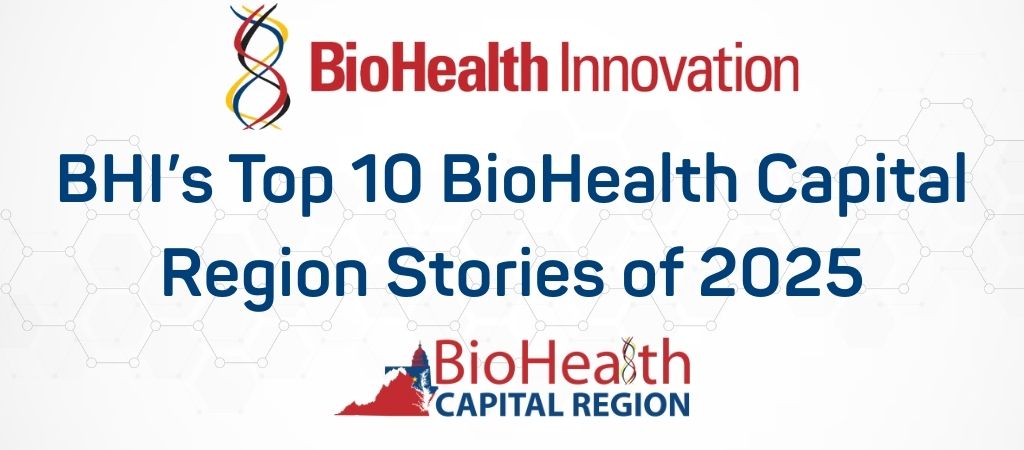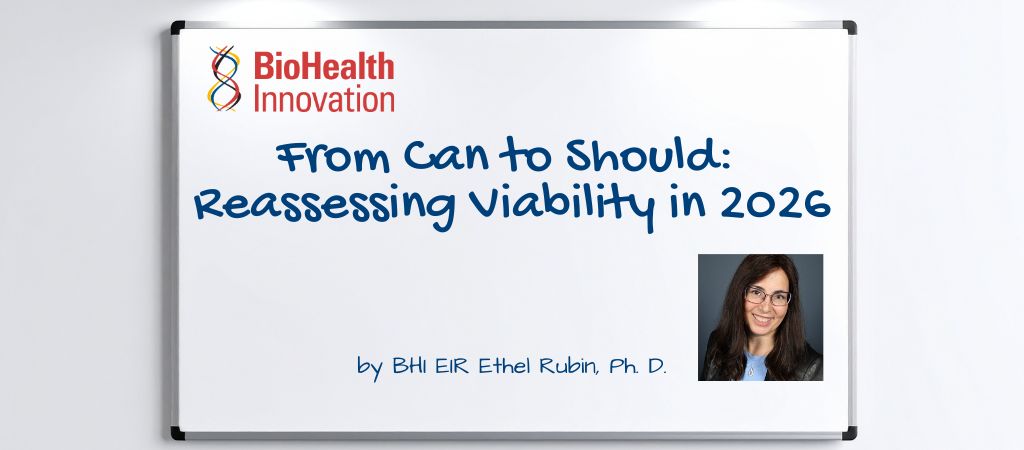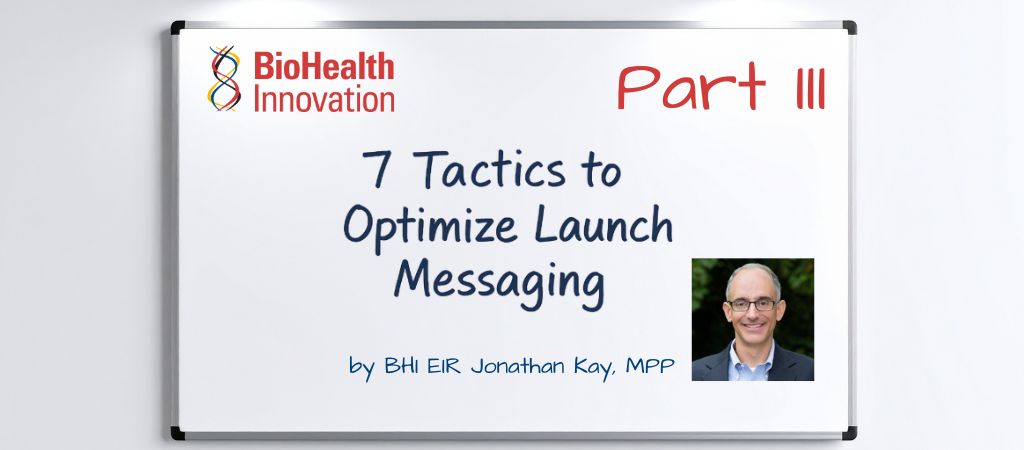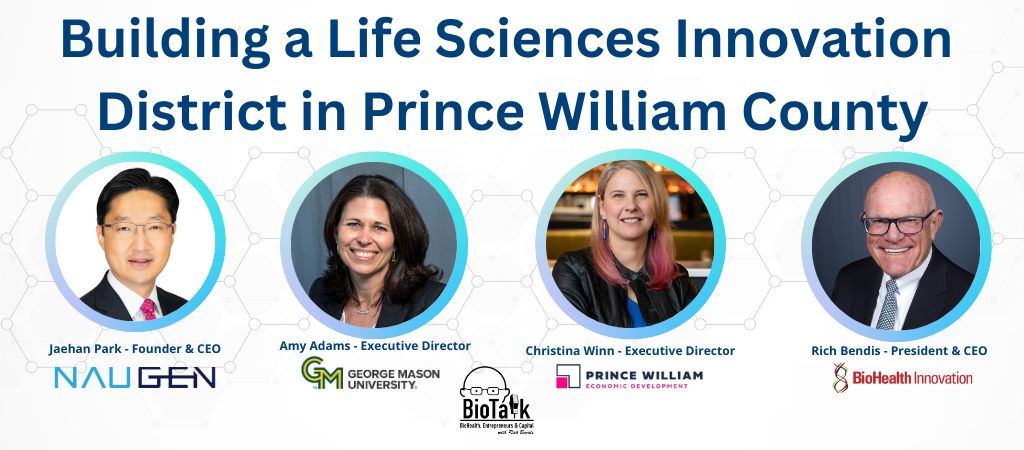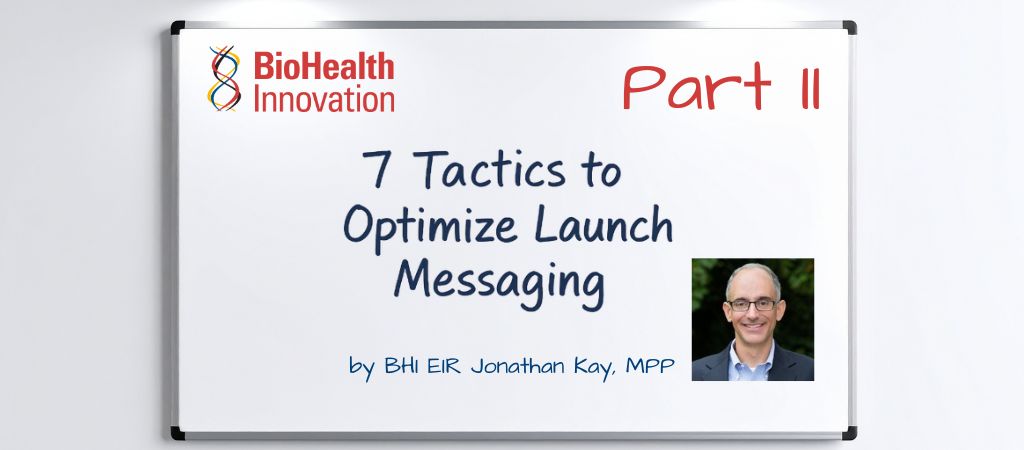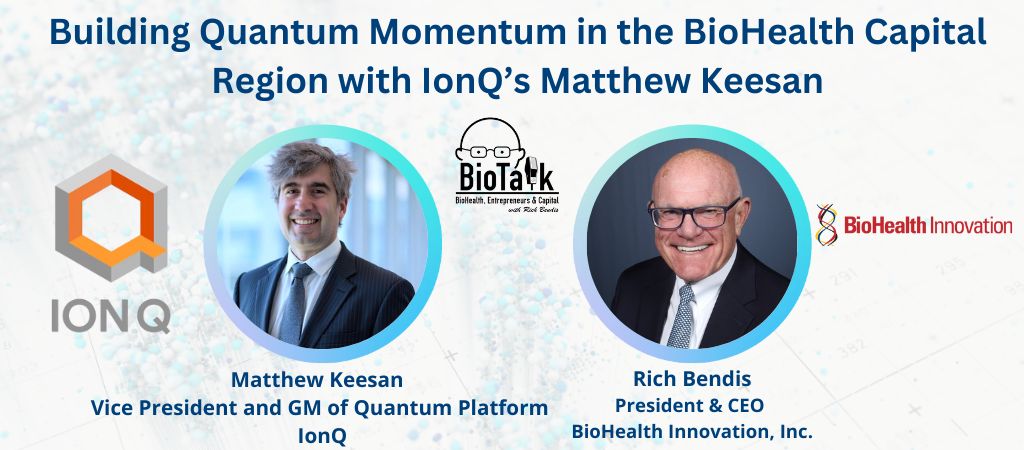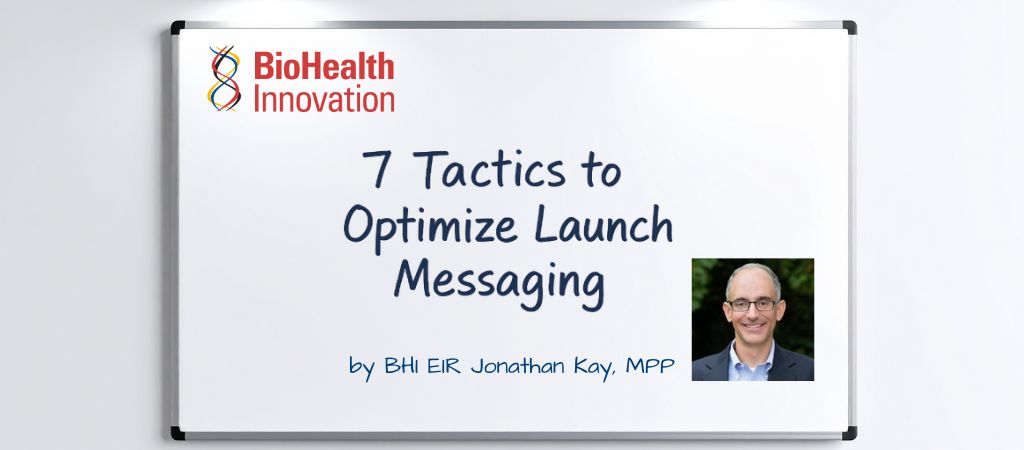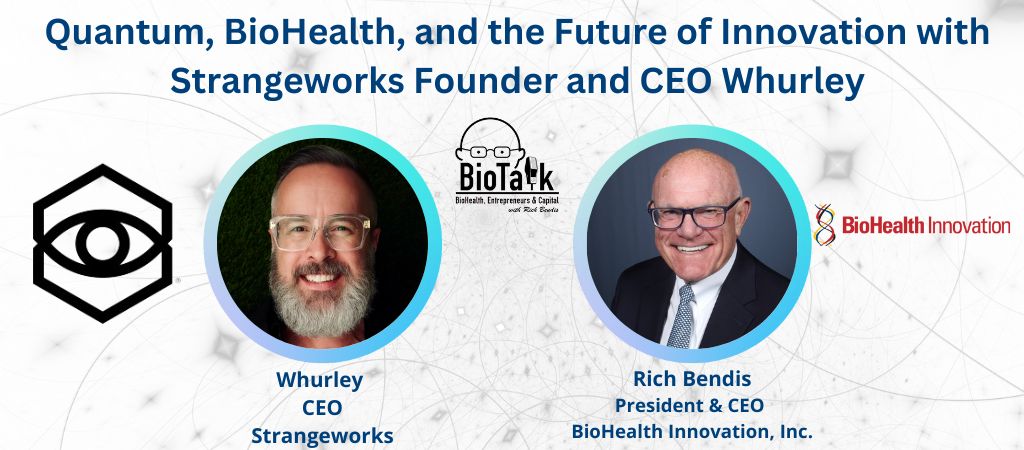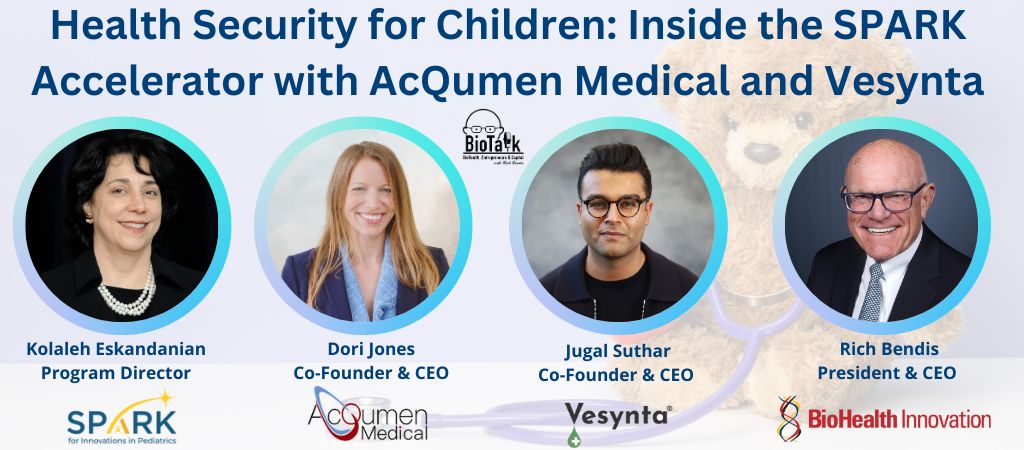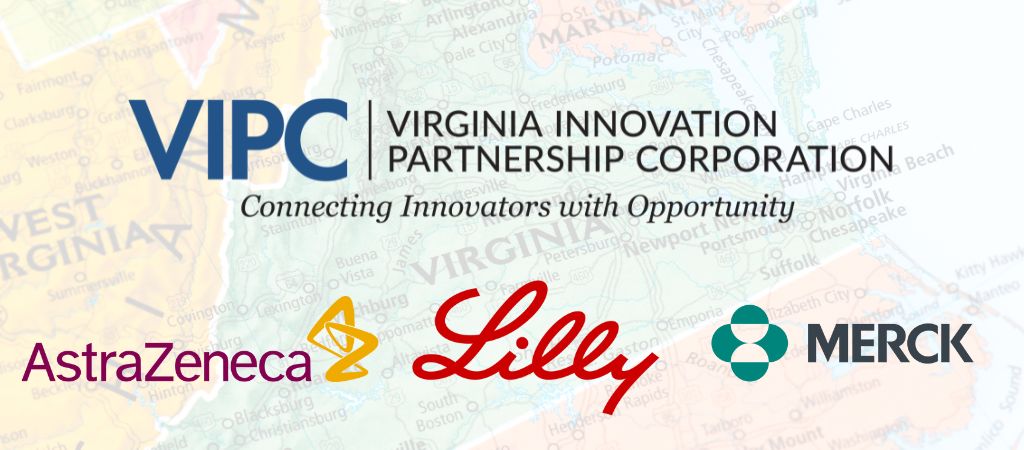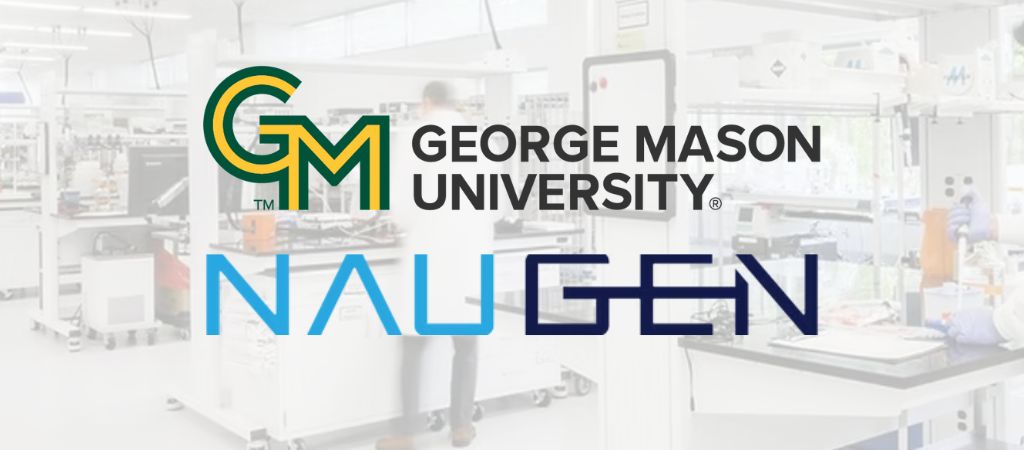BioHealth News
BHI’s Top 10 BioHealth Capital Region Stories of 2025
The BioHealth Capital Region closed out 2025 with clear evidence of strength and momentum. While life sciences companies across the country navigated capital constraints,…
Read MoreFrom Can to Should: Reassessing Viability in 2026
Last year, I wrote a LinkedIn Article titled “To be or not to be: Just because you CAN, doesn’t mean you SHOULD.” The point…
Read MoreBHI EIR Insights: 7 Tactics to Optimize Launch Messaging – Part III
by Jonathan Kay, MPP, Managing Partner, Health Market Experts & BioHealth Innovation, Inc. Entrepreneur-in-Residence In our last two posts of this series, we discussed:…
Read MoreBuilding a Life Sciences Innovation District in Prince William County on BioTalk
This episode of the BioTalk with Rich Bendis Podcast brings together leaders from industry, academia, and economic development to unpack the vision behind a…
Read MoreSamsung Biologics Expands U.S. Manufacturing Capabilities with Strategic Acquisition of Human Genome Sciences from GSK
INCHEON, South Korea, ROCKVILLE, Md. and LONDON , Dec. 21, 2025 /PRNewswire/ -- Samsung Biologics (KRX: 207940.KS), a leading contract development and manufacturing organization (CDMO), today announced…
Read MoreBHI EIR Insights: 7 Tactics to Optimize Launch Messaging – Part II
by Jonathan Kay, MPP, Managing Partner, Health Market Experts & BioHealth Innovation, Inc. Entrepreneur-in-Residence Last week, we introduced our series, Optimizing Launch Messaging. We…
Read MoreUnlocking Federal Funding with Jon Nelson, Director of Client Engagement at BioHealth Innovation, for Johns Hopkins Technology Ventures
[caption id="attachment_143000" align="alignright" width="300"] Jon Nelson, PhD[/caption] Securing non-dilutive funding is often a turning point for early-stage companies looking to scale while preserving ownership.…
Read MoreEntrepreneurs in Residence Call: Biohealth Commercialization Leaders with AI and Quantum Experience
BioHealth Innovation is expanding its Entrepreneurs in Residence (EIR) network and is seeking experienced leaders at the intersection of biohealth and advanced technologies, including…
Read MoreBuilding Quantum Momentum in the BioHealth Capital Region with IonQ’s Matthew Keesan on BioTalk
IonQ Vice President and GM of Quantum Platform Matthew Keesan joins BioTalk for a clear look at how they are advancing quantum computing from…
Read MoreBHI EIR Insights: 7 Tactics to Optimize Launch Messaging – Part I
by Jonathan Kay, MPP, Managing Partner, Health Market Experts & BioHealth Innovation, Inc. Entrepreneur-in-Residence Healthcare is complicated. Communicating effectively doesn’t need to be. For…
Read MoreQuantum, Biohealth, and the Future of Innovation with Strangeworks Founder and CEO Whurley on BioTalk
William Hurley, known widely as Whurley, joins BioTalk for a deep look at how quantum computing is moving from theory into practical use across…
Read MoreStrengthening Virginia’s BioHealth Future with Secretary of Commerce and Trade Juan Pablo Segura on BioTalk
Secretary Juan Pablo Segura joins BioTalk for a conversation about Virginia's growing position in the biohealth economy and the statewide strategy behind it. He…
Read MoreHealth Security for Children: Inside the SPARK Accelerator with AcQumen Medical and Vesynta
This episode brings together three leaders working at the intersection of pediatric innovation, health security, and early-stage commercialization. Kolaleh Eskandanian, Program Director of SPARK,…
Read MoreVIPC Signs MOU with AstraZeneca, Eli Lilly, Merck to Develop the Virginia Center for Advanced Pharmaceutical Manufacturing to Train Workforce of the Future
RICHMOND, Va., Nov. 20, 2025 /PRNewswire/ -- A Memorandum of Understanding (MOU) signed by the Virginia Innovation Partnership Corporation (VIPC) and AstraZeneca, Eli Lilly (Lilly), and Merck to develop the Virginia Center…
Read MoreA new era of global growth: George Mason and Naugen launch international innovation accelerator
This month, a new Northern Virginia International Soft-Landing Accelerator (NISA) program, designed to help start-ups from around the globe find guidance, connections, and lab…
Read More
